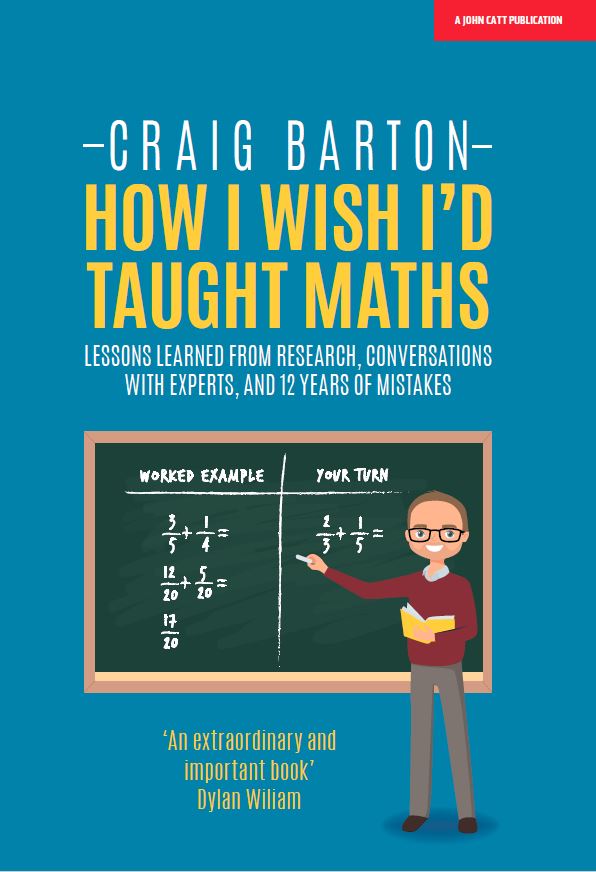SATs Key Stage 2 Mathematics Paper 1: Arithmetic (2023) Interactive Practice
⚠️ Non-Calculator Paper
All solutions show full working that can be done by hand.
Mark Scheme Legend
- M1 = Method mark (correct method applied)
- A1 = Accuracy mark (correct answer)
- 1m = 1 mark awarded for correct answer
Table of Contents
- Question 1 (Subtraction)
- Question 2 (Addition)
- Question 3 (Multiplication)
- Question 4 (Addition)
- Question 5 (Multiple Integers)
- Question 6 (Multiply by 10)
- Question 7 (Decimal Addition)
- Question 8 (Subtraction)
- Question 9 (Division)
- Question 10 (Multiplication)
- Question 11 (Division)
- Question 12 (Missing Number)
- Question 13 (Division)
- Question 14 (Multiplying Fractions)
- Question 15 (Division)
- Question 16 (Adding Fractions)
- Question 17 (Divide by 10)
- Question 18 (Adding Fractions)
- Question 19 (Decimal Subtraction)
- Question 20 (Long Multiplication)
- Question 21 (Dividing Fractions)
- Question 22 (Adding Mixed Numbers)
- Question 23 (Order of Operations)
- Question 24 (Decimal Multiplication)
- Question 25 (Long Division)
- Question 26 (Short Division)
- Question 27 (Percentages)
- Question 28 (Dividing Fractions)
- Question 29 (Long Multiplication)
- Question 30 (Percentages)
- Question 31 (Decimal Multiplication)
- Question 32 (Missing Number Fraction)
- Question 33 (Long Division)
- Question 34 (Subtracting Fractions)
- Question 35 (Percentages)
- Question 36 (Fraction of Amount)
Question 1 (1 mark)
\( 707 – 10 = \)
Worked Solution
💡 Why we do this:
We are subtracting 10 from 707. Since we are subtracting a multiple of 10, only the tens digit will change.
✏ Working:
The number is 707.
The tens digit is 0. Since we can’t subtract 1 from 0 directly in that column without looking at the hundreds, we can think of it as 70 tens minus 1 ten = 69 tens.
\( 707 – 10 = 697 \)
🏆 Final Answer:
697
✓ (1m)
Question 2 (1 mark)
\( \square = 6,138 + 456 \)
Worked Solution
💡 Why we do this:
We need to add two numbers together. We can use the column method to ensure we align the place values correctly.
✏ Column Addition:
6 1 3 8 + 4 5 6 ———- 6 5 9 4 1
Steps:
- \( 8 + 6 = 14 \) (write 4, carry 1)
- \( 3 + 5 + 1 = 9 \)
- \( 1 + 4 = 5 \)
- \( 6 + 0 = 6 \)
🏆 Final Answer:
6,594
✓ (1m)
Question 3 (1 mark)
\( 4 \times 702 = \)
Worked Solution
💡 Why we do this:
We need to multiply a 3-digit number by a 1-digit number. We can use short multiplication.
✏ Short Multiplication:
7 0 2 × 4 ——– 2 8 0 8
Steps:
- \( 4 \times 2 = 8 \)
- \( 4 \times 0 = 0 \)
- \( 4 \times 7 = 28 \)
🏆 Final Answer:
2,808
✓ (1m)
Question 4 (1 mark)
\( \square = 8,005 + 408 \)
Worked Solution
💡 Why we do this:
Align the numbers by their place value (ones, tens, hundreds, thousands) and add them column by column.
✏ Column Addition:
8 0 0 5 + 4 0 8 ———- 8 4 1 3 1
🏆 Final Answer:
8,413
✓ (1m)
Question 5 (1 mark)
\( 2 \times 4 \times 30 = \)
Worked Solution
💡 Why we do this:
We can multiply the numbers in any order. It’s often easiest to multiply the smaller numbers first, or numbers that make easy multiples.
✏ Method:
First: \( 2 \times 4 = 8 \)
Then: \( 8 \times 30 \)
To do \( 8 \times 30 \), we can do \( 8 \times 3 = 24 \) and then multiply by 10 (add a zero).
\( 24 \times 10 = 240 \)
🏆 Final Answer:
240
✓ (1m)
Question 6 (1 mark)
\( \square = 10 \times 96 \)
Worked Solution
💡 Why we do this:
Multiplying by 10 shifts all digits one place to the left. This has the effect of adding a zero to the end of a whole number.
✏ Working:
\( 96 \times 10 = 960 \)
🏆 Final Answer:
960
✓ (1m)
Question 7 (1 mark)
\( 7.8 + 6.953 = \)
Worked Solution
💡 Why we do this:
When adding decimals, it is critical to line up the decimal points. We can fill in empty decimal places with zeros to make it easier.
✏ Column Addition:
Rewrite 7.8 as 7.800 to match the 3 decimal places in 6.953.
7 . 8 0 0 + 6 . 9 5 3 ———— 1 4 . 7 5 3 1 1
🏆 Final Answer:
14.753
✓ (1m)
Question 8 (1 mark)
\( \square = 8,217 – 5,463 \)
Worked Solution
💡 Why we do this:
Use column subtraction. Be careful when the top digit is smaller than the bottom digit; you will need to exchange (borrow).
✏ Column Subtraction:
71111 8 2 1 7 – 5 4 6 3 ———- 2 7 5 4
Steps:
- \( 7 – 3 = 4 \)
- \( 1 – 6 \) (can’t do), borrow from 2. \( 11 – 6 = 5 \)
- \( 1 – 4 \) (can’t do), borrow from 8. \( 11 – 4 = 7 \)
- \( 7 – 5 = 2 \)
🏆 Final Answer:
2,754
✓ (1m)
Question 9 (1 mark)
\( 450 \div 9 = \)
Worked Solution
💡 Why we do this:
We can use related facts. We know \( 45 \div 9 \), so we can use that to find \( 450 \div 9 \).
✏ Working:
\( 45 \div 9 = 5 \)
So, \( 450 \div 9 = 50 \)
🏆 Final Answer:
50
✓ (1m)
Question 10 (1 mark)
\( 8 \times 65 = \)
Worked Solution
💡 Why we do this:
We can use short multiplication or partitioning.
✏ Method 1: Short Multiplication
6 5 × 8 —— 5 2 0 4
\( 8 \times 5 = 40 \) (0, carry 4)
\( 8 \times 6 = 48 \), plus 4 = 52
🏆 Final Answer:
520
✓ (1m)
Question 11 (1 mark)
\( 2,800 \div 7 = \)
Worked Solution
💡 Why we do this:
Use related times table facts. We know \( 28 \div 7 \).
✏ Working:
\( 28 \div 7 = 4 \)
So, \( 2,800 \div 7 = 400 \)
🏆 Final Answer:
400
✓ (1m)
Question 12 (1 mark)
\( 801 – \square = 795 \)
Worked Solution
💡 Why we do this:
We are missing the part that is subtracted. If \( A – B = C \), then \( A – C = B \). We can swap the missing number with the answer.
✏ Working:
Calculate: \( 801 – 795 \)
Count up from 795 to 801:
795 + 5 = 800
800 + 1 = 801
Total difference = 5 + 1 = 6
🏆 Final Answer:
6
✓ (1m)
Question 13 (1 mark)
\( 2,700 \div 3 = \)
Worked Solution
💡 Why we do this:
Use related facts: \( 27 \div 3 = 9 \).
✏ Working:
\( 27 \div 3 = 9 \)
Therefore, \( 2,700 \div 3 = 900 \)
🏆 Final Answer:
900
✓ (1m)
Question 14 (1 mark)
\( \frac{2}{7} \times \frac{5}{9} = \)
Worked Solution
💡 Why we do this:
To multiply fractions, we multiply the numerators (tops) together and the denominators (bottoms) together.
✏ Working:
Numerator: \( 2 \times 5 = 10 \)
Denominator: \( 7 \times 9 = 63 \)
Fraction: \( \frac{10}{63} \)
(This cannot be simplified further).
🏆 Final Answer:
\( \frac{10}{63} \)
✓ (1m)
Question 15 (1 mark)
\( 747 \div 9 = \)
Worked Solution
💡 Why we do this:
We can use the Bus Stop Method (Short Division).
✏ Bus Stop Method:
0 8 3 _____ 9|7 4 7 7 2
Steps:
- How many 9s in 7? 0. Carry the 7.
- How many 9s in 74? \( 8 \times 9 = 72 \). Remainder 2.
- How many 9s in 27? \( 3 \times 9 = 27 \).
🏆 Final Answer:
83
✓ (1m)
Question 16 (1 mark)
\( \frac{3}{16} + \frac{5}{8} = \)
Worked Solution
💡 Why we do this:
To add fractions, the denominators (bottom numbers) must be the same. We need to convert \( \frac{5}{8} \) so it has a denominator of 16.
✏ Converting Fractions:
\( 8 \times 2 = 16 \), so multiply numerator and denominator by 2:
\( \frac{5}{8} = \frac{5 \times 2}{8 \times 2} = \frac{10}{16} \)
✏ Adding:
\( \frac{3}{16} + \frac{10}{16} = \frac{13}{16} \)
🏆 Final Answer:
\( \frac{13}{16} \)
✓ (1m)
Question 17 (1 mark)
\( 0.3 \div 10 = \)
Worked Solution
💡 Why we do this:
Dividing by 10 moves the digits one place to the right (or the decimal point one place to the left).
✏ Working:
0.3 becomes 0.03
🏆 Final Answer:
0.03
✓ (1m)
Question 18 (1 mark)
\( \frac{1}{3} + \frac{2}{6} + \frac{5}{18} = \)
Worked Solution
💡 Why we do this:
Find a common denominator for 3, 6, and 18. Since 3 and 6 both go into 18, we can use 18 as the common denominator.
✏ Converting Fractions:
\( \frac{1}{3} = \frac{1 \times 6}{3 \times 6} = \frac{6}{18} \)
\( \frac{2}{6} = \frac{2 \times 3}{6 \times 3} = \frac{6}{18} \)
\( \frac{5}{18} \) stays the same.
✏ Adding:
\( \frac{6}{18} + \frac{6}{18} + \frac{5}{18} = \frac{17}{18} \)
🏆 Final Answer:
\( \frac{17}{18} \)
✓ (1m)
Question 19 (1 mark)
\( 29.5 – 16.125 = \)
Worked Solution
💡 Why we do this:
Use column subtraction. Add placeholder zeros to 29.5 so it has the same number of decimal places as 16.125.
✏ Column Subtraction:
29.5 becomes 29.500
4910 2 9 . 5 0 0 – 1 6 . 1 2 5 ————– 1 3 . 3 7 5
🏆 Final Answer:
13.375
✓ (1m)
Question 20 (2 marks)
\( 508 \times 74 = \)
Worked Solution
💡 Why we do this:
For multiplying a 3-digit number by a 2-digit number, we use Long Multiplication. We multiply by the ones (4), then the tens (70).
✏ Long Multiplication:
5 0 8 × 7 4 ——- 2 0 3 2 (508 × 4) 3 5 5 6 0 (508 × 70) ——— 3 7 5 9 2
Steps:
- \( 4 \times 8 = 32 \) (write 2, carry 3)
- \( 4 \times 0 = 0 \), plus 3 = 3
- \( 4 \times 5 = 20 \)
- Next row (multiply by 70): Add placeholder 0.
- \( 7 \times 8 = 56 \) (write 6, carry 5)
- \( 7 \times 0 = 0 \), plus 5 = 5
- \( 7 \times 5 = 35 \)
- Add the two rows together.
🏆 Final Answer:
37,592
✓ (2m)
Question 21 (1 mark)
\( \frac{1}{8} \div 3 = \)
Worked Solution
💡 Why we do this:
Dividing a fraction by a whole number is the same as multiplying the denominator by that number.
✏ Working:
\( \frac{1}{8} \div 3 = \frac{1}{8 \times 3} = \frac{1}{24} \)
🏆 Final Answer:
\( \frac{1}{24} \)
✓ (1m)
Question 22 (1 mark)
\( 1 + \frac{2}{7} + \frac{5}{7} = \)
Worked Solution
💡 Why we do this:
Add the fractions first. They already have the same denominator.
✏ Working:
\( \frac{2}{7} + \frac{5}{7} = \frac{7}{7} \)
\( \frac{7}{7} \) is equal to 1 whole.
So, \( 1 + 1 = 2 \)
🏆 Final Answer:
2
✓ (1m)
Question 23 (1 mark)
\( 70 + 48 \div 6 = \)
Worked Solution
💡 Why we do this:
We must follow the Order of Operations (BIDMAS/BODMAS). Division comes before Addition.
✏ Step 1: Division
\( 48 \div 6 = 8 \)
✏ Step 2: Addition
\( 70 + 8 = 78 \)
🏆 Final Answer:
78
✓ (1m)
Question 24 (1 mark)
\( 3.2 \times 12 = \)
Worked Solution
💡 Why we do this:
We can ignore the decimal point initially, calculate \( 32 \times 12 \), and then put the decimal point back (one decimal place).
✏ Working:
\( 32 \times 10 = 320 \)
\( 32 \times 2 = 64 \)
\( 320 + 64 = 384 \)
Put decimal back (divide by 10): 38.4
🏆 Final Answer:
38.4
✓ (1m)
Question 25 (2 marks)
\( 611 \div 47 = \)
Worked Solution
💡 Why we do this:
We are dividing by a 2-digit number (47). We can use Long Division. It’s helpful to write out a few multiples of 47 first.
✏ Multiples of 47:
1 × 47 = 47
2 × 47 = 94
3 × 47 = 141
✏ Long Division:
1 3 —– 47)6 1 1 -4 7 (1 × 47) —- 1 4 1 -1 4 1 (3 × 47) —— 0
Steps:
- 47 goes into 61 once (1). Remainder 14.
- Bring down the 1 to make 141.
- 47 goes into 141 exactly 3 times.
🏆 Final Answer:
13
✓ (2m)
Question 26 (1 mark)
\( 5,746 \div 5 = \)
Worked Solution
💡 Why we do this:
Use short division (Bus Stop Method). The answer will have a remainder or a decimal.
✏ Bus Stop Method:
1 1 4 9 r1 ___________ 5|5 7 4 6 0 2 4
Steps:
- 5 into 5 goes 1.
- 5 into 7 goes 1 r 2.
- 5 into 24 goes 4 r 4.
- 5 into 46 goes 9 r 1.
🏆 Final Answer:
1,149 r 1 (or 1,149.2 or \(1,149\frac{1}{5}\))
✓ (1m)
Question 27 (1 mark)
\( 52\% \text{ of } 700 = \)
Worked Solution
💡 Why we do this:
52% is \( 50\% + 2\% \). We can find these parts separately and add them.
✏ Working:
\( 50\% \) of 700 (half) = 350
\( 1\% \) of 700 (divide by 100) = 7
\( 2\% \) of 700 = \( 7 \times 2 = 14 \)
Total: \( 350 + 14 = 364 \)
🏆 Final Answer:
364
✓ (1m)
Question 28 (1 mark)
\( \frac{1}{3} \div 6 = \)
Worked Solution
💡 Why we do this:
Dividing a fraction by 6 is the same as multiplying the denominator by 6.
✏ Working:
\( \frac{1}{3} \div 6 = \frac{1}{3 \times 6} = \frac{1}{18} \)
🏆 Final Answer:
\( \frac{1}{18} \)
✓ (1m)
Question 29 (2 marks)
\( 5227 \times 43 = \)
Worked Solution
💡 Why we do this:
We use Long Multiplication. Multiply 5227 by 3, then multiply 5227 by 40.
✏ Long Multiplication:
5 2 2 7 × 4 3 ——— 1 5 6 8 1 (5227 × 3) 2 0 9 0 8 0 (5227 × 40) ———– 2 2 4 7 6 1
🏆 Final Answer:
224,761
✓ (2m)
Question 30 (1 mark)
\( 95\% \text{ of } 180 = \)
Worked Solution
💡 Why we do this:
It is easier to find 5% and subtract it from 100%.
✏ Working:
100% of 180 = 180
10% of 180 = 18
5% of 180 = 9 (half of 10%)
95% = 100% – 5%
180 – 9 = 171
🏆 Final Answer:
171
✓ (1m)
Question 31 (1 mark)
\( 0.4 \times 37 = \)
Worked Solution
💡 Why we do this:
Calculate \( 4 \times 37 \) first, then divide the answer by 10 (because 0.4 is 4 divided by 10).
✏ Working:
\( 37 \times 2 = 74 \)
\( 37 \times 4 = 148 \)
\( 148 \div 10 = 14.8 \)
🏆 Final Answer:
14.8
✓ (1m)
Question 32 (1 mark)
\( 1 – \square = \frac{7}{10} \)
Worked Solution
💡 Why we do this:
Think of 1 whole as \( \frac{10}{10} \).
✏ Working:
\( \frac{10}{10} – \frac{?}{10} = \frac{7}{10} \)
\( 10 – 7 = 3 \)
So the missing fraction is \( \frac{3}{10} \).
🏆 Final Answer:
\( \frac{3}{10} \)
✓ (1m)
Question 33 (2 marks)
\( 4472 \div 26 = \)
Worked Solution
💡 Why we do this:
Long division by 26. Write down useful multiples of 26: 26, 52, 78, 104…
✏ Long Division:
1 7 2 ——- 26)4 4 7 2 -2 6 (1 × 26) —- 1 8 7 -1 8 2 (7 × 26) —— 5 2 -5 2 (2 × 26) —- 0
Note for 7 × 26: \( 26 \times 7 = (20 \times 7) + (6 \times 7) = 140 + 42 = 182 \)
🏆 Final Answer:
172
✓ (2m)
Question 34 (1 mark)
\( 2\frac{5}{6} – \frac{3}{4} = \)
Worked Solution
💡 Why we do this:
Find a common denominator for 6 and 4. The number 12 works well.
✏ Converting Fractions:
\( \frac{5}{6} = \frac{10}{12} \)
\( \frac{3}{4} = \frac{9}{12} \)
✏ Subtracting:
\( 2\frac{10}{12} – \frac{9}{12} = 2\frac{1}{12} \)
🏆 Final Answer:
\( 2\frac{1}{12} \)
✓ (1m)
Question 35 (1 mark)
\( 38\% \text{ of } 750 = \)
Worked Solution
💡 Why we do this:
We can convert 38% to a decimal (0.38) and multiply, or break it down into chunks (10%, 1%, etc.). Let’s multiply.
✏ Method 1: Multiplication
\( 750 \times 38 \)
\( 750 \times 30 = 22,500 \)
\( 750 \times 8 = 6,000 \)
Total = 28,500
Divide by 100 for percentage: 285
✏ Method 2: Partitioning
10% = 75
30% = \( 75 \times 3 = 225 \)
1% = 7.5
8% = \( 7.5 \times 8 = 60 \)
38% = \( 225 + 60 = 285 \)
🏆 Final Answer:
285
✓ (1m)
Question 36 (1 mark)
\( \frac{2}{3} \times 900 = \)
Worked Solution
💡 Why we do this:
Find \( \frac{1}{3} \) of 900 by dividing by 3, then multiply by 2 to find \( \frac{2}{3} \).
✏ Working:
\( 900 \div 3 = 300 \)
\( 300 \times 2 = 600 \)
🏆 Final Answer:
600
✓ (1m)








